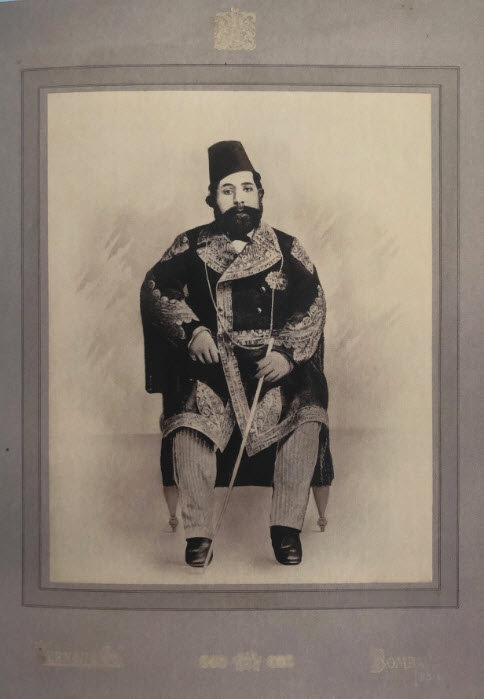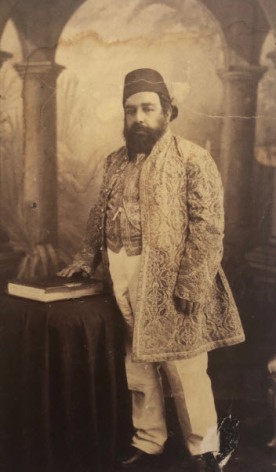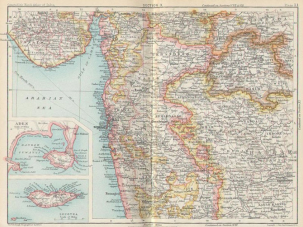In the aftermath of the destruction of their state of Alamut, the Nizari Ismailis who survived the Mongol catastrophe, were deprived of a central leadership they had enjoyed during the Alamut period (1090-1256). Although the Imamat continued in the progeny of Imam Rukn al-Din Khurshah (r. 1255-1257), the last Imam of Alamut, Imams remained in hiding for almost two centuries. The scattered Nizari communities developed locally and in isolation from one another while observing strict precautionary measures in order to escape rampant persecution, concealing not only their true beliefs but also their religious literature, resorting to a wide variety of Sunni, Sufi, Twelver Shi’i, and Hindu disguises.
Around 1425-26, Imam Islam Shah settled in Anjundan, in central Persia to revive the da’wa and literary activities. Imam Hasan Ali Shah, who succeeded to the Imamat in 1817, achieved political prominence in Persia and was bestowed the title of Aga Khan by the Qajar monarch Fath Ali Shah (d. 1834). Owing to political unrest, Imam migrated to Qandahar, Afghanistan in 1841, marking the end of the Persian period in Nizari Ismaili history that had lasted some seven centuries since Alamut time.
In Afghanistan, Imam Hasan Ali Shah associated with the British offering his services to them. He subsequently migrated to Sind in the Indian subcontinent, continuing to offer his services to the British. In 1844, Imam left Sind, travelling to Karachi, Cutch, Kathiavar, and Calcutta, eventually settling permanently in Bombay (now Mumbai) in 1848, establishing his durkhana, or chief residence. He died in April 1881 and was succeeded by his son Aqa Ali Shah.
Imam Aqa Ali Shah was born in Mahallat, Persia, in 1830. He spent most of his early years in Iraq, possibly Najaf, where he went with his mother while his father was in conflict with the Qajar establishment in Persia. In Iraq, Imam studied Arabic, Persian, and Nizari Ismaili doctrines, returning to Persia in the late 1840s. He then travelled with his mother to Bombay, where his father was residing, in 1853. During the Imamat of his father (1817-1881), he had “regularly visited different Nizari Khoja communities, especially in Sind and Kathiawar, and organised their jama’at-khanas (Daftary, The Isma’ilis, p 517).
Aga Khan Aqa

Undated portrait of Imam Aqa Ali Shah. Source: The Ismailis: An Illustrated History
During his reign, Imam Aqa Ali Shah continued his father’s policy to maintain good relations with the British in the Indian subcontinent. Imam was appointed to the Bombay Legislative Council, a body responsible for governing the Bombay Presidency, an administrative subdivision of British India founded in 1618 and dissolved in 1947. Imam was also elected to the presidency of the Muhammadan National Association. Through similar agencies, Imam worked to improve education opportunities for all Muslims in the Indian subcontinent.
Imam was “distinctly concerned about the welfare of the Nizari Khojas and opened a number of schools for the Khoja children in Bombay and elsewhere, also assisting needy Khoja families “(Daftary, The Isma’ilis p 517). Imam also made a special effort “to collect the ginans by assigning the task of locating and acquiring the relevant manuscripts to a specific group of Indian followers” (Daftary, The Ismailis p 442).
Aga Khan Aqa
Undated portrait of Imam Aqa Ali Shah. Source: The Ismailis: An Illustrated History
“The reigns of the first and second Aga Khans spanned an epoch when Europe saw its greatest expansion and domination over non-European lands, many of which were populated by Muslims. In 1798, France invaded Egypt under Napoleon Bonaparte. The French retreated from Egypt in 1801, but by the middle of the 19th century they had begun to occupy parts of North Africa (Algeria and Tunisia). By 1858, Britain had established effective rule over most of India. The British also contended with Imperial Russia for control over vital parts of Central Asia, many of which had capitulated to Russia by the late 1800s. In Southeast Asia, the Dutch controlled most of the Indonesian Archipelago. Throughout this period, the Ottomans, the last Muslim imperial power, lost territory, power and prestige….European hegemony had affected Muslims everywhere, including Ismailis” (The Ismailis: An Illustrated history p 196)
Imam Aqa Ali Shah Aga Khan II died in 1885 after contracting pneumonia, and was buried in a family mausoleum in Najaf, Iraq. He was succeeded by his eight-year old son Sultan Muhammad Shah. “As European imperialism and colonization increased in the following half century, the Ismailis were to undergo even more profound shifts guided by their contemporary Imam, Aga Khan III” (The Ismailis: An Illustrated history p 196).
Sources:
Farhad Daftary, The Isma’ilis Their History and Doctrines, Cambridge University Press, 1990
Farhad Daftay, Zulfikar Hirji, The Ismailis: An Illustrated History, Azimuth Editions in association with The Institute of Ismaili Studies
nimirasblog.wordpress.com/2019/04/05/aprilthis-month-in-history-imam-aqa-ali-shah-aga-khan-ii-succeeded-to-the-imamat/

